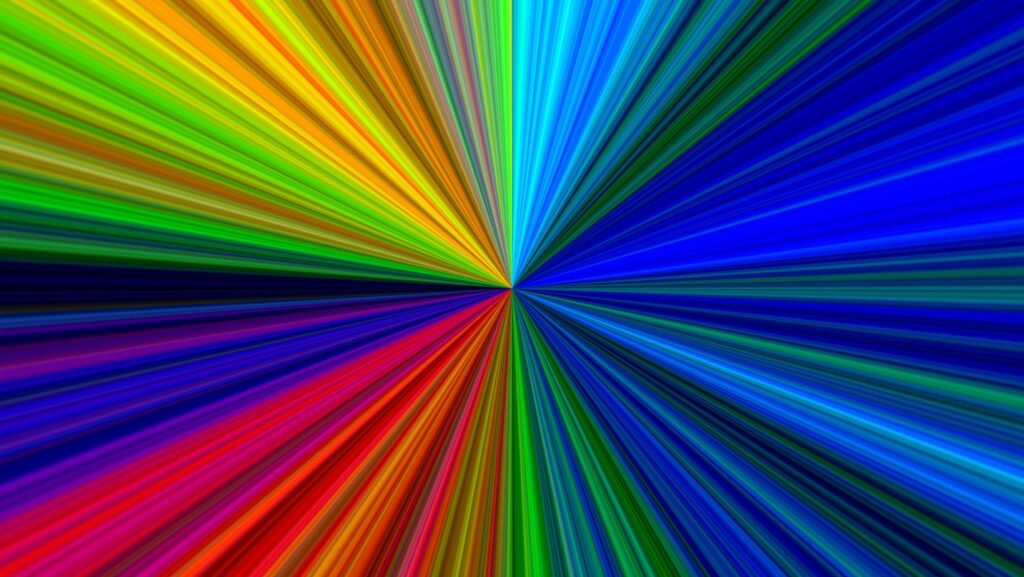
Our lives significantly engage with color: it influences our emotions, perceptions, and behaviors. Understanding the principles of color psychology–particularly in home decor–empowers us to create spaces that evoke specific moods and atmospheres; each hue carries its own psychological effect. Thus, from calming blues to energizing yellows, we can harness the power of every shade to transform a room’s ambiance. This article delves into the captivating realm of color psychology in home decor. It examines how a variety of hues can elevate the mood and atmosphere within your living spaces.
The Power of Color
The study of color psychology delves into the effects that different hues and shades have on human behavior and emotions. It also investigates the cultural and personal associations we form with these colors, exploring their psychological impact further. Color choices in home decor can significantly influence a room’s mood, atmosphere, and overall feel; therefore, interior designers must carefully consider them as essential elements for creating an aesthetically pleasing space – a deliberation equally crucial for homeowners.
Cool Colors for Calmness
Blue, green, and purple – these cool colors evoke a sense of serenity, tranquility, and relaxation due to their known calming effects, thus making them ideal for spaces intended to promote peace. Bedrooms are the sanctuaries where we seek rest after long days filled with activity, and bathrooms are our personal retreats from bustling routines. Meditation areas – designated spots for introspection and rejuvenation– all thrive under the influence of these soothing hues that compose an optimal cool color scheme, truly creating oases dedicated solely to relaxation after strenuous hours in life’s whirlwind.
Warm Colors for Comfort
Conversely, warm colors – red, orange, and yellow – associate themselves with energy; they epitomize warmth and comfort. Such hues can incite feelings of coziness, intimacy, and stimulation, making them an apt fit for social areas such as living rooms, dining rooms, and kitchens. By fostering a welcoming atmosphere that encourages conversation and connection among family or friends, these schemes profoundly influence our interactions in positive ways.
Neutral Colors for Versatility
Many home decor schemes rely on the backbone of neutral colors: white, beige, and gray; these versatile hues offer a sophisticated—timeless even—neutral backdrop that magnifies other colors and textures. Infusing any space with balance and harmony is an inherent quality of using neutral color palettes.

Additionally, they imbue rooms with an illusion of expansiveness and airiness – a compelling allure for small or constricted spaces.
Home Furniture
Creating a harmonious and inviting space involves more than just selecting the right colors; it also requires thoughtful consideration of furniture and layout choices. Murphy beds, with their space-saving design and versatility, offer a unique opportunity to enhance the mood and atmosphere of a room while maximizing functionality. By integrating Murphy beds into your home decor scheme, you can create a cohesive and harmonious living environment that promotes relaxation, comfort, and well-being.
Maximizing Space and Functionality
Murphy beds are renowned for their space-saving design, making them an ideal choice for small living spaces where every square foot counts; by folding up vertically against the wall when not in use, Murphy beds free up valuable floor space, creating a more open and spacious feel to the room. This enhanced sense of space can contribute to a feeling of calmness and tranquility, which aligns perfectly with the calming effects of cool colors like blue and green.
Accent Colors for Drama
Most color schemes rest on neutrals as their foundation; however, it is the accent colors – bold and vibrant hues strategically used sparingly – that truly infuse a room with depth, interest, and personality. These attention-grabbing contribute to creating focal points and visual intrigue: This exemplifies how deliberate placement of seemingly inconspicuous elements can dramatically transform your home décor—whether it be an unexpected pop of red within a monochromatic palette or splashes of yellow amidst otherwise neutral tones. Accent colors offer more than mere aesthetics; they inject drama and excitement into your home decor.
Creating Harmonious Color Schemes
Incorporate color into your home decor while considering the interplay of different hues and the overarching mood you aim to establish; it is essential. Harmonious schemes leverage a fusion of adjacent colors on the wheel, which creates an integrated, cohesive look. Analogous schemes: be they blue-green or yellow-orange—exude tranquility and balance, making them optimal for instilling peace in any room setting.
In Conclusion
Color psychology offers a fascinating insight into how colors can influence our emotions, perceptions, and behaviors. In-home decor: through the strategic use of color–a space can undergo a transformation; specific moods and atmospheres are evoked that enhance our overall well-being and quality of life.

Whether one prefers calming blues, energizing yellows, or sophisticated neutrals—understanding the psychological effects of these hues is crucial. It assists in creating a home not just aesthetically pleasing—but also harmonious; it invites warmth and comfort.












